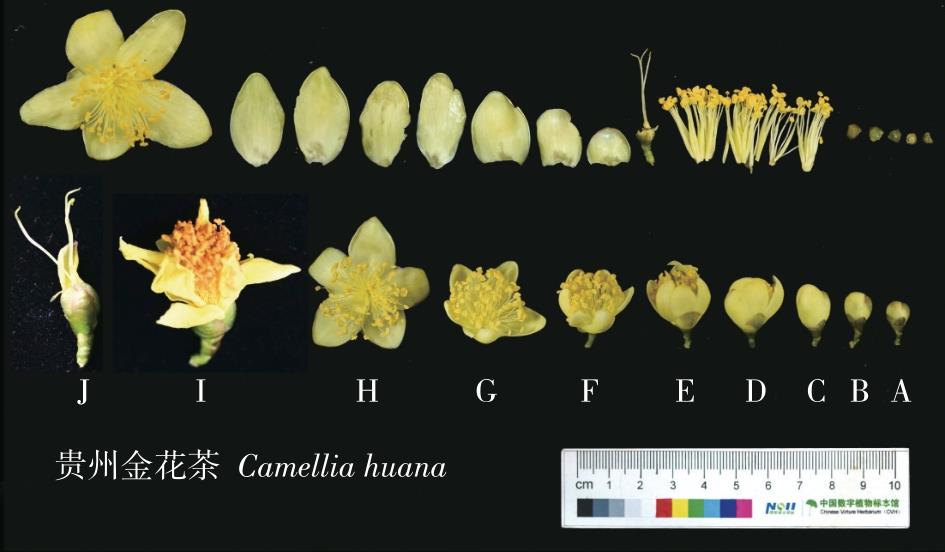 PDF(3733 KB)
PDF(3733 KB)


The reproductive system and pollination biology of endangered Camellia huana
CHEN Juyan, LI He, GUO Weizhen, XU Chaoran, DENG Lunxiu
Journal of Nanjing Forestry University (Natural Sciences Edition) ›› 2025, Vol. 49 ›› Issue (3) : 153-162.
 PDF(3733 KB)
PDF(3733 KB)
 PDF(3733 KB)
PDF(3733 KB)
The reproductive system and pollination biology of endangered Camellia huana
【Objective】Camellia huana is a rare and endangered plant endemic to Guizhou province. It is only distributed near Shuangjiang Town, Ceheng County, Guizhou Province, and its natural population is in continuous decline. The floral characteristics, breeding system and pollination biology of C. huana were studied to reveal the life history characteristics of this species and explore the factors affecting its reproductive success, so as to provide scientific basis for the development of corresponding protection and utilization.【Method】In this study, the flowering biology, flower organ characteristics and breeding system, pollen viability, stigma acceptability, cross index and pollination mode of adult plants of C. huana were observed in the wild population and introduced cultivation population.【Result】(1)C. huana bloomed from October to November and average flowering time per plant is 20.57 days.Each plant blossoms 20 flowers per day, and the average flowering time per plant was 139.71 flowers. The population flowering time was about 1-2 months.(2) It is a bisexual flower and 1-3 terminal or axillary flowers. The immature bud is relatively slow, the bud period is 12.47 days on average, and the single flowering period is 4-7 days.(3) The diameter and height of the corolla were 36.85 and 31.94 mm, respectively. The stalk length, calyx width and style length of the wild population were significantly longer than those of the introduced population, while the anther width was slightly smaller than that of the introduced population. (4) The pollen vitality begins at the early stamen showing stage,and they achieve their maximum vitality after the petals have unfolded, and then gradually weakened. Before withering, it still had vitality, but the vitality was weak.The stigma receptivity started from bloom and lasted for one to two days,and the pollen viability was high in the whole florescence.Male and female reproductive units in the duration of the encounter period,but the time is short. The stigma and anther are almost in the same position at the time of flowering,and the relative position of the stamen and style remained unchanged in the whole flowering process.(5)A study of the breeding system indicated that the pollen-ovule ratio was about 122.11,and the crossing index was three.The bagging experiments showed that C. huana was adapted to both wind and insect pollination,After dropping stigma with 10% (mass fraction) sucrose solution, the seed set rate of artificial cross-pollination was twice higher than that of natural pollination.The pollination insects were Dilichovespula saxonica, Vespa velutina and Apis cerana.In the breeding system of this species,out-crossing predominates, although partially self-compatible,it requires pollinators.【Conclusion】C. huana blooms in October to November, the population flowering period is relatively long, the single flower flowering period is 4-7 days, belongs to the bisexual flowers, some males premature and male and female, its breeding system is self-compatible, sometimes need pollinators, anemophilic and entomophilic mixed pollination type.

Camellia huana / flowering characteristics / breeding system / pollination biology
| [1] |
张宏达, 杨成华, 张廷中. 贵州金花茶一新种[J]. 广西植物, 1997, 17(4):289-290.
|
| [2] |
国家林业和草原局. 国家林业和草原局农村部公告(2021年第15号)[J]. 自然资源通讯, 2021(18):34-53.
|
| [3] |
杨成华, 方小平. 珍稀园林树种离蕊金花茶[J]. 广西林业科学, 2003, 32(4):217-218.
|
| [4] |
杨成华, 张廷忠. 离蕊金花茶调查研究[J]. 贵州林业科技, 1998, 26(4):45-47,65.
|
| [5] |
侯娜, 邓伦秀, 王港, 等. 贵州特有植物离蕊金花茶嫁接繁殖试验[J]. 种子, 2013, 32(10):83-85.
|
| [6] |
杨成华, 张廷忠, 姚淑均. 离蕊金花茶引种繁殖初报[J]. 贵州林业科技, 1999, 27(3):47-50.
|
| [7] |
杨成华, 张廷忠, 方小平. 贵州2种金花茶的扦插繁殖试验[J]. 林业科技通讯, 1996(10):23-24.
|
| [8] |
张乃燕, 王东雪, 江泽鹏, 等. 金花茶嫁接繁殖试验研究[J]. 北方园艺, 2010(21):34-36.
|
| [9] |
张乃燕, 江泽鹏, 陈林强, 等. 金花茶嫁接繁殖砧木亲和力试验[J]. 经济林研究, 2007, 25(3):65-68.
|
| [10] |
陈志萍, 陈景艳, 龙海燕, 等. 离蕊金花茶大树嫁接成活率影响因素研究[J]. 现代农业科技, 2022(14):88-90.
|
| [11] |
肖丽梅. 金花茶组植物开花生物学特性及花粉粒形态初步研究[D]. 南宁: 广西大学, 2019.
|
| [12] |
叶创兴, 许兆然. 关于金花茶组的研究[J]. 中山大学学报(自然科学版), 1992, 31(4):68-77.
|
| [13] |
闵天禄, 张文驹. 山茶属古茶组和金花茶组的分类学问题[J]. 云南植物研究, 1993, 15(1):1-15.
|
| [14] |
陈菊艳, 邓伦秀, 黄郎, 等. 离蕊金花茶花粉活力测定、培养基筛选及贮藏研究[J]. 贵州林业科技, 2022, 50(2):1-5.
|
| [15] |
陈菊艳, 邓伦秀, 李鹤, 等. 遮光对贵州原产两种金花茶生长发育和生理特性的影响[J]. 南京林业大学学报(自然科学版), 2022, 46(3):83-90.
|
| [16] |
杨序成, 杨成华, 王港. 离蕊金花茶矿质元素测定分析[J]. 贵州林业科技, 2016, 44(4):27-31.
|
| [17] |
罗在柒, 姜运力, 李兰, 等. 贵州原产两种金花茶不同部位微量元素及重金属成分分析[J]. 农业与技术, 2020, 40(15):61-63.
|
| [18] |
徐超然, 张家才, 龙海燕, 等. 贵州金花茶开花生物学特性研究[J]. 贵州林业科技, 2022, 50(3):12-16,6.
|
| [19] |
陈菊艳, 杨远庆. 遮光对野扇花生长特性和生理指标的影响[J]. 西北植物学报, 2010, 30(8):1646-1652.
|
| [20] |
万海霞, 邓洪平, 何平, 等. 濒危植物丰都车前的繁育系统与传粉生物学研究[J]. 生态学报, 2018, 38(11):4018-4026.
|
| [21] |
|
| [22] |
|
| [23] |
刘芬. 扇脉杓兰的生殖生物学研究[D]. 北京: 中国林业科学研究院, 2012.
|
| [24] |
刘芬, 李全健, 王彩霞, 等. 濒危植物扇脉杓兰的花部特征与繁育系统[J]. 林业科学, 2013, 49(1):53-60.
|
| [25] |
宋志平, 郭友好, 黄双全. 黄花蔺的繁育系统研究[J]. 植物分类学报, 2000, 38(1):53-59,103.
|
| [26] |
李新蓉, 唐欣, 付文洁. 荒漠孑遗植物裸果木的花部特征及繁育系统[J]. 生态学杂志, 2016, 35(10):2592-2598.
|
| [27] |
|
| [28] |
邱建生. 中国西南山茶属植物传粉昆虫研究[D]. 北京: 中国林业科学研究院, 2015.
|
| [29] |
|
| [30] |
|
| [31] |
唐璐璐, 韩冰. 开花式样对传粉者行为及花粉散布的影响[J]. 生物多样性, 2007, 15(6):680-686.
|
| [32] |
何亚平, 刘建全. 植物繁育系统研究的最新进展和评述[J]. 植物生态学报, 2003, 27(2):151-163.
|
| [33] |
杨琨. 植物繁育系统中传粉机制的多样性及交配系统研究评析[J]. 西安文理学院学报(自然科学版), 2012, 15(3):41-44,48.
|
| [34] |
谢深喜, 罗先实, 吴月嫦, 等. GA3、2,4-D、B和蔗糖对梨花粉生活力及花粉生长速度的影响[J]. 果树学报, 2004, 21(4):289-294.
|
/
| 〈 |
|
〉 |